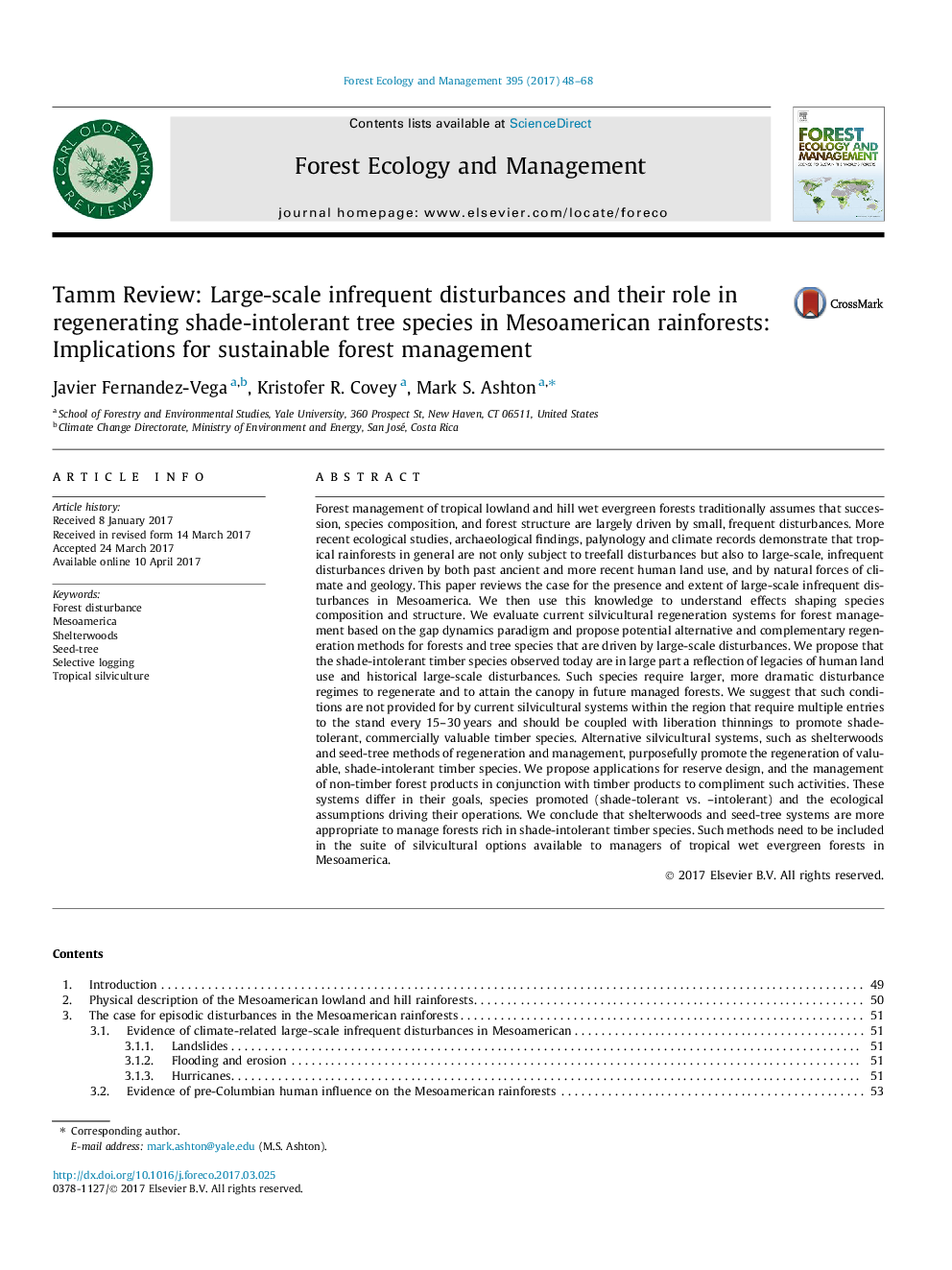| کد مقاله | کد نشریه | سال انتشار | مقاله انگلیسی | نسخه تمام متن |
|---|---|---|---|---|
| 4759432 | 1421363 | 2017 | 21 صفحه PDF | دانلود رایگان |

- A comprehensive review of silviculture for Central American rainforests.
- Shade-intolerant timber species are legacies of land use and large-scale disturbance.
- Shelterwood and seed tree systems are appropriate regeneration methods.
Forest management of tropical lowland and hill wet evergreen forests traditionally assumes that succession, species composition, and forest structure are largely driven by small, frequent disturbances. More recent ecological studies, archaeological findings, palynology and climate records demonstrate that tropical rainforests in general are not only subject to treefall disturbances but also to large-scale, infrequent disturbances driven by both past ancient and more recent human land use, and by natural forces of climate and geology. This paper reviews the case for the presence and extent of large-scale infrequent disturbances in Mesoamerica. We then use this knowledge to understand effects shaping species composition and structure. We evaluate current silvicultural regeneration systems for forest management based on the gap dynamics paradigm and propose potential alternative and complementary regeneration methods for forests and tree species that are driven by large-scale disturbances. We propose that the shade-intolerant timber species observed today are in large part a reflection of legacies of human land use and historical large-scale disturbances. Such species require larger, more dramatic disturbance regimes to regenerate and to attain the canopy in future managed forests. We suggest that such conditions are not provided for by current silvicultural systems within the region that require multiple entries to the stand every 15-30Â years and should be coupled with liberation thinnings to promote shade-tolerant, commercially valuable timber species. Alternative silvicultural systems, such as shelterwoods and seed-tree methods of regeneration and management, purposefully promote the regeneration of valuable, shade-intolerant timber species. We propose applications for reserve design, and the management of non-timber forest products in conjunction with timber products to compliment such activities. These systems differ in their goals, species promoted (shade-tolerant vs. -intolerant) and the ecological assumptions driving their operations. We conclude that shelterwoods and seed-tree systems are more appropriate to manage forests rich in shade-intolerant timber species. Such methods need to be included in the suite of silvicultural options available to managers of tropical wet evergreen forests in Mesoamerica.
Journal: Forest Ecology and Management - Volume 395, 1 July 2017, Pages 48-68